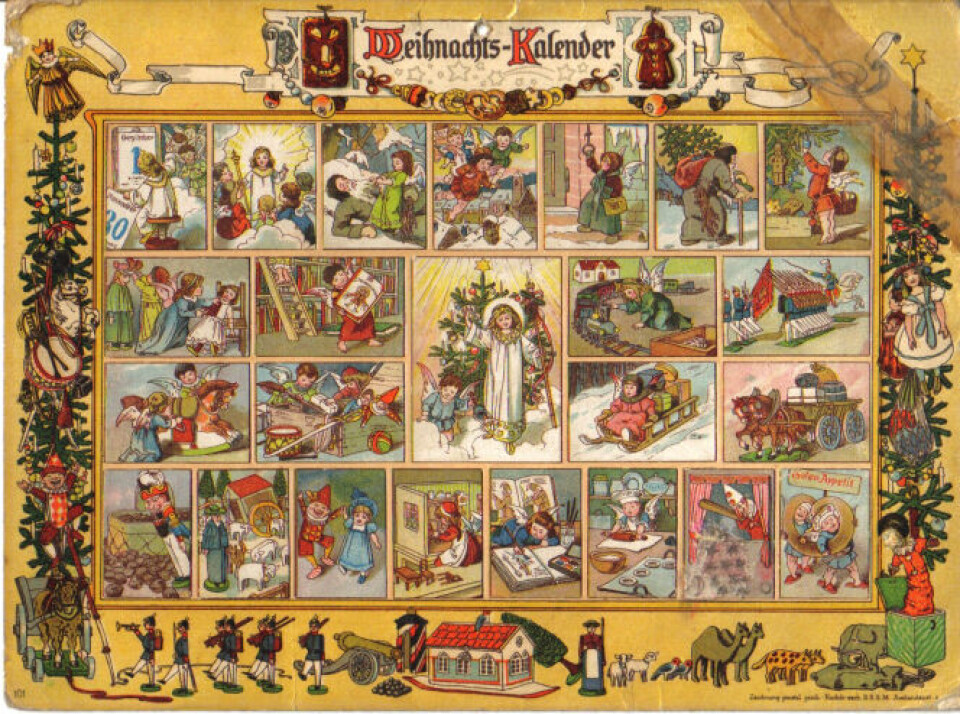-
Easter Monday in France: what shops can you expect to be open?
Some supermarkets will be open but not all
-
French boulangeries demand right for staff to work on May 1 so they can open
Artisan bakery owners can work but employees cannot, while certain industrial bakeries are allowed to remain open with workers
-
Online ‘anti-waste’ supermarket offers deals on everyday items in France - we test it
Discounts of 10% to 50% available on brand products
Countdown conundrum: To buy or not buy an advent calendar?
Advent calendars are nothing new, but they are more popular than ever, with many brands selling them as a promotional tool

Never has there been so much choice over which type of advent calendar to buy to count the days until Christmas. It is a market which continues to grow each year, with an increasing range of ideas to appeal to all ages, tastes and interests, from toys for children, beauty products, chocolates and other foodie goodies, treats for your pets and for strictly 18+ different alcohols and even sex-toys.
Nearly every brand now produces its own advent calendar. To help you choose there is an online website dedicated to the sale of advent calendars, with 250 different calendars ranging in price from €9.99 for the basic Kinder chocolate version to the most expensive at €700 for a limited edition calendar from Chanel in the shape of the iconic N°5 perfume bottle. Last year there was also one for €950 from Italian jeweller Carolina Bucci, culminating in an 18 carat gold bead on the 24th.
For those who think that is all just too commercial, you can always make your own, but even then, it is easy to be tempted by kits. Cultura have ten models to choose from, plus countless accessories such as ready-made match boxes.
Advent calendars have come a long way from the first ones which, like so many Christmas traditions, originated in Germany, in the 19th century. These were home-made to mark the countdown to December 25, and some were as simple as 24 lines drawn in chalk on a wall which children could rub out each day.

The first commercially sold calendar is attributed to a publisher from Munich, Gerhard Lang in 1903. It was called Im Lande des Christkinds – ‘In the land of the Christ child’. Each day an image from a cut out sheet was pasted over a Christmas poem, which could be read before being hidden. The first with doors revealing an image behind appeared in 1920.
After World War Two the idea spread to other countries and then in the 1950s the first calendars with chocolates appeared on the market. These continue to be the most popular.
Lego and Playmobil both started producing advent calendars at the end of the 1990s. From then on the market has developed to suit all tastes from big brand names to ones with animals, racing cars, board games and puzzles.
Frédérique Tutt, expert on the world toys and games market for market research company NPD, says sales of advent calendars with a toy a day rose by 24% between 2018 and 2020. Not even confinement, when toy shops were closed for part of the season, could buck the trend:
“That is a massive increase. Sales of advent calendars start in the last week of October and double each week and are at their peak at the end of November. They are increasing in popularity and we see shops giving over more and more space on their shelves to these products. The most popular are construction toys.”
She says they are an effective marketing tool for companies:
“I do not know for sure, but I imagine the profit margins are a bit lower on advent calendars than other toys, in the hope that parents will buy them and after seeing the delight on their children’s faces every day when they open their calendar, choose their products for Christmas presents. Their average price is €22, which remains affordable for parents.”
There are “game” advent calendars for adults too. Frédérique Tutt, herself has been seduced by one to share with her husband and teenage son:
“I have bought an Escape Game style calendar for the family. Each day there is a clue to solve which leads you to the next door to open. We can work as a team. My husband is good at the ones involving maths, I am good with words, and my son with culture. I think it is great fun to be able to do this together and a welcome development in the range of calendars on the market.”
Related stories
French village is a real-life Advent calendar
























